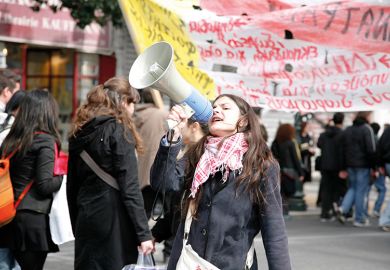Queensland student unions have sought state government intervention in the allocation of their universities’ funds, in the latest sign of a crisis afflicting Australia’s student voice.
University of Queensland and Queensland University of Technology student representatives have written to state education minister Grace Grace, asking her to secure funding for their unions by changing the universities’ governing acts.
The groups want to be allocated a fixed proportion of income from the Student Services and Amenities Fee levied on most Australian students. The SSAF was introduced in 2011 by the then Labor federal government, after its Coalition predecessors had all but crippled student representation by making union fees voluntary in 2006.
Universities that manage SSAF income have a relatively free hand in how they use it and the flow of funds to unions can be precarious. This is not the case in Western Australia, where 2016 amendments to university acts require the state’s institutions to quarantine over half of SSAF revenue for student representation.
The QUT Guild and UQ Union want similar arrangements. “Without firm legislative parameters, [our] access to the SSAF will become contingent on acting as a subordinate wing of the university administration,” the letter to Ms Grace says. “As student representatives, our independence is central to our existence.”
Ms Grace said she had no current plans to change SSAF arrangements but wanted to hear the details of the proposal.
QUT Guild’s outgoing president, Vinnie Batten, said he had enjoyed “quite good” relations with the university administration, which had allocated the union about A$1 million (£520,000) this year. “But across the sector there are limitations on how you can criticise and openly campaign against your university, without a legitimate fear of funding being decreased,” he said.
At nearby Griffith University, hundreds of thousands of dollars in SSAF funds that had been earmarked for student representation were suddenly diverted into counselling services. A Griffith spokesman said student representative bodies had “strongly agreed” with the redirection of funds to meet “the growing demand for these services”, and that Griffith had commissioned a review into SSAF funding.
But National Union of Students president Desiree Cai said the decision meant Griffith student representatives could not engage with the national student movement. “They don’t have the money,” she said.
Ms Cai said only 20 of Australia’s 41 universities had student unions independent enough to affiliate to the national body. Fewer had stand-alone postgraduate associations. “Security of funding is the number one thing student unions see as a barrier to authentic partnership,” she said.
Last month’s Tertiary Education Quality and Standards Agency conference heard details of projects to cultivate student representation. They included Student Voice Australia, a pilot project involving 10 institutions, and student partnership agreements at the University of Western Australia and Australian National University.
But a conference session on “students as partners” drew a scathing response from the invited speakers. “Some institutions have lost the will to support student representation,” said Council of Australian Postgraduate Associations president Natasha Abrahams.
Union of Aboriginal and Torres Strait Islander Students president Braedyn Edwards said universities tended to see students as customers. “This kind of view has to change and students have to be seen as equals,” he said.
“Sitting around committee meetings or student representative councils, you see the distrust between students and university management.”
Register to continue
Why register?
- Registration is free and only takes a moment
- Once registered, you can read 3 articles a month
- Sign up for our newsletter
Subscribe
Or subscribe for unlimited access to:
- Unlimited access to news, views, insights & reviews
- Digital editions
- Digital access to THE’s university and college rankings analysis
Already registered or a current subscriber?












